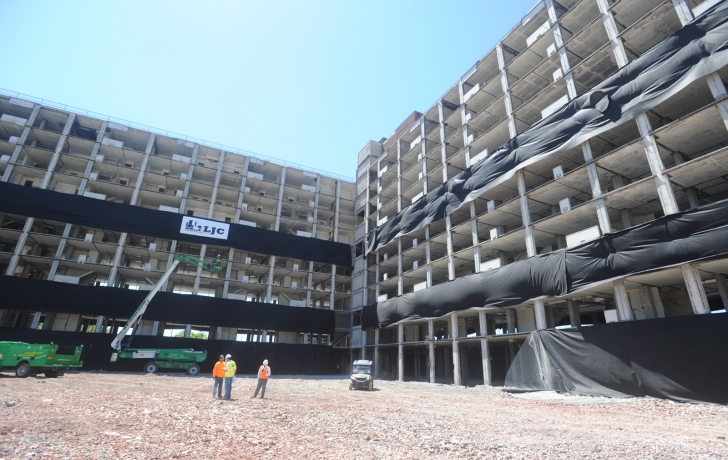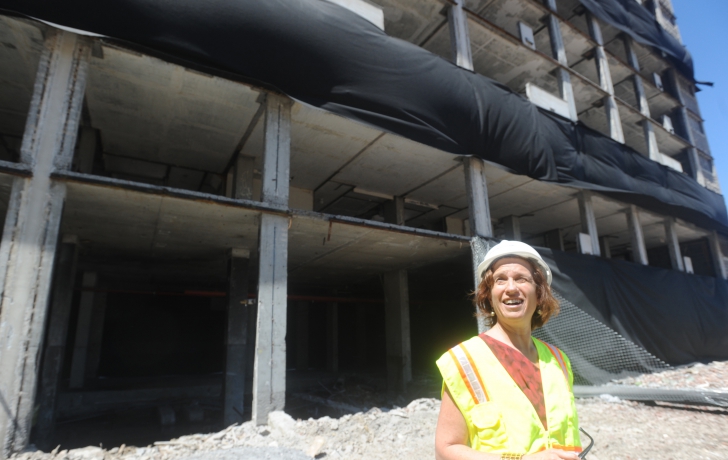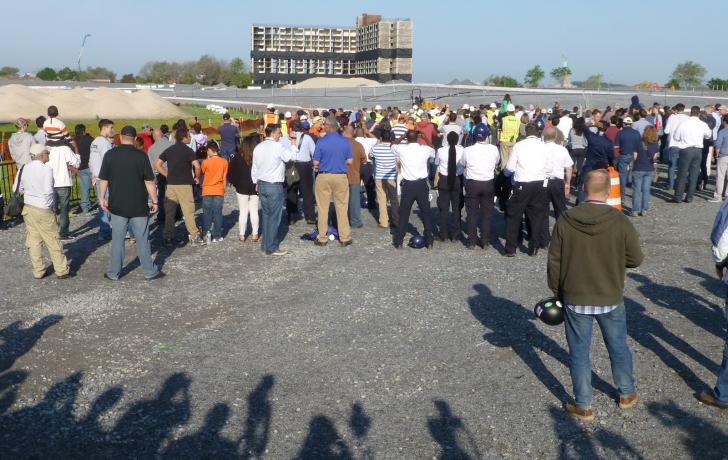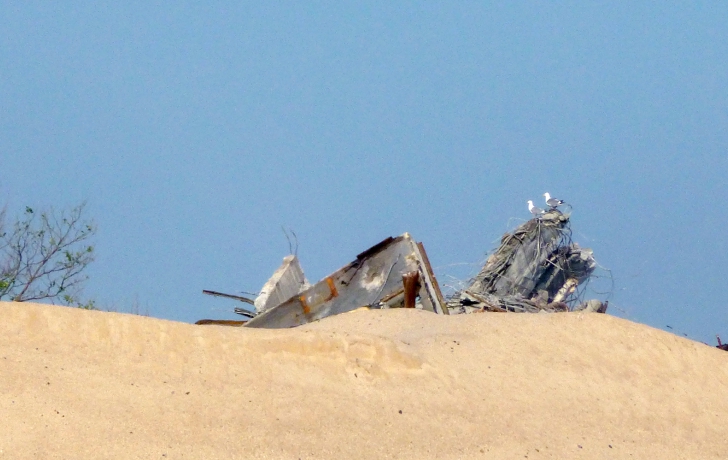Former Governors Island Apartment Building Reduced to Dust and Rubble
Standing some 900 feet from an 11-story, dynamite-infused former apartment building, Leslie Koch was beaming.
“There is no building I want to blow up more than this building,” said Koch, who as president of the Trust for Governors Island is overseeing the transformation of the island’s southern end into a 30-acre park. And Sunday morning, as the media and spectators gathered in a special area to watch the structure’s quick but dramatic demise, there would soon be one fewer towering impediments to that goal.
It would be the take-down of Governors Island's largest non-historic building, once known as the Cunningham Apartments and the city’s first implosion-based demolition in 12 years.
“That building is just standing right in the middle of [what will be] the sports field,” she told reporters, noting that the rubble would be recycled as landfill for the park. “So in about a year when you come out here to play Little League sports, you'll actually be standing on the building, believe it or not.”
As detonation time—7:36 a.m.—neared, over a loudspeaker came a two-minute warning, then one minute, then 30 seconds.
“Seven, six, five, four, three, two, one.”
Puffs of smoke seeped from protective black tarp wrapped around the building's first, third and seventh floors, quickly followed by a teeth-rattling boom and eight seconds of 29 rapid-fire explosions. Nearly 250 pounds of dynamite, set in the columns of those three floors, were doing their work.
First buckling at each end of the building’s three wings, then caving in on itself, the structure was, within less than half a minute, reduced to a 25-foot-pile of debris and a billowing cloud of dust.
Several days before the demolition, Joseph Byrne, a project executive with Turner Construction, the construction manager for the project, had led a group of reporters through the building as a preview for the event.
Nearly two dozen other buildings on the island have been demolished using conventional methods, he noted, but this one, the tallest at 115 feet, required a different means.
“It’s safer to do it with one implosion than to put all the workers up, by hand, with chopping guns,” he explained. (The implosion is one of only a handful the city has seen in the last half-century. Most recently, two 400-foot-high steel utility tanks in Greenpoint, Brooklyn, were imploded in 2001.)
The building, erected in 1968 and known as the Cunningham Apartments when it housed Coast Guard families for nearly 30 years, was already a shell of its former self by the time it was taken down. Little more than exterior walls, columns and some ceiling ducts remained. Thom Doud, a project manager for Controlled Demolition, Inc., the company subcontracted by Turner, pointed to some of the more than 900 holes bored into the building’s columns where the dynamite would be inserted—mostly on the first floor, which Doud referred to as the “major motion floor.”
Elevator shafts and stairwells, which made up the hardened portions of the building, were removed, he said, to ensure that the building would collapse smoothly and in the direction that engineers had planned.
“It’s very important that we get the building loose and soft so that we can get her to move in the way that we’d like her to,” he said.
Were a “misfire” to occur, an uncommon scenario but one Doud was prepared for, the building would only partially collapse while still containing live explosives.
The prevention method? Redundancy. “Everywhere where we could put a detonator,” he explained, “we put [one] on the other end of that line.”
Were remote-based remedies to fail, Doud said, “It’s my job to go in a structure when there’s a misfire and rectify it. In 23 years, I’ve never had to do it, knock on wood, and I’m not going to start here.”
The black tarp that covered the building’s three dynamite-packed floors was meant to prevent debris from flying during the implosion. Four days before the demolition, in advance of the delivery of dynamite, a 750,000-square-foot area around the building was cordoned off. On Sunday morning, the Federal Aviation Administration also kept airspace clear up to 3,000 feet high and for a lateral distance of half-a-mile.
The implosion went off without a hitch at 7:36—the time Koch had calculated would provide the perfect view from the 7:30 Staten Island-bound ferry.
“It takes approximately six minutes for the ferry to go from Whitehall to the point right between the Statue of Liberty and Governors Island,” she said, “where we hope that people will have not only incredible views but will share all the photographs they take.”
Koch said making the demolition a public spectacle was in keeping with the Trust’s values of inclusion. “The hallmark of everything we’ve done is that the public is always involved,” she said.
“And let's be honest,” she added. “An implosion is super cool!”








